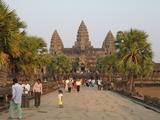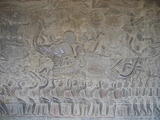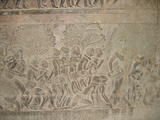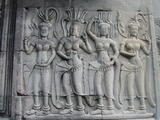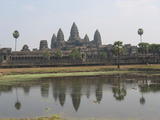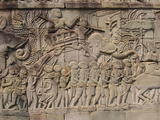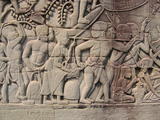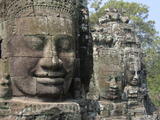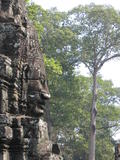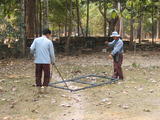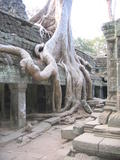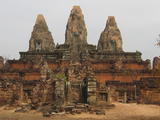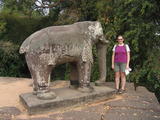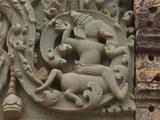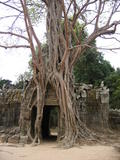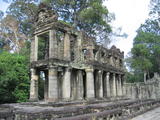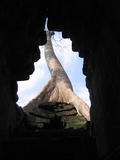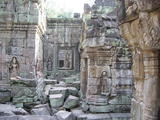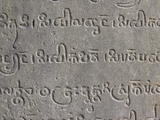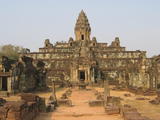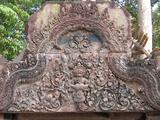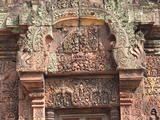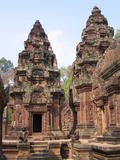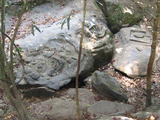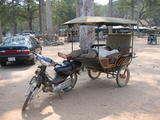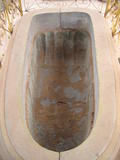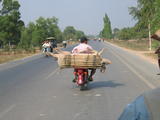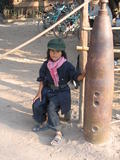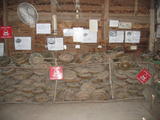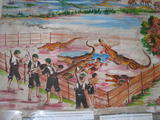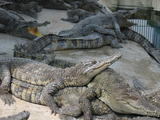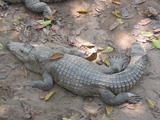| < < < Previous story | Next story > > > | |
Angkor, CambodiaKuala Lumpur, 27 March 2005
Contents:AngkorAs we were running short on time, we flew directly from Saigon to Siem Reap in Cambodia. Siem Reap is the town near Angkor where we were going to spend our last week in Indochina. Although Angkor is now being overrun by tourists, there is so much to see, that it is still possible to avoid some of the crowds. The ruins are truly impressive and we were also lucky to have a very friendly tuk-tuk driver during the six days that we visited the ruins. Spending such a long time visiting the ruins requires the purchase of a week pass which costs 60 US Dollars (at least for foreigners). This is steep by South East Asian standards, but at least, you may think, the money helps to preserve this amazing archaeological site. Dream on... Ticketing in Angkor is done by a subsidiary of Sokimex, an oil and gas company, with close connections to the Cambodian Communist party. Our guide said it was a Vietnamese company, a fact that I cannot confirm as it seems to be a Cambodian registered company, which may or may not have Vietnamese investors. Our guide explained that the Cambodian government is still very much under the influence of Vietnam, amongst the general population there is little trust in the government and widespread suspicions of corruption. Anyway, a concession apparently given to Sokimex by the Cambodian government in 1999 required it to pay just 1 million US Dollars per year to the Cambodian government, in exchange for being allowed to pocket all the entrance fees. Unfortunately this means that the money we are paying to visit Angkor, is not used for the preservation and restoration of the sites. Preservation and restoration of the sites falls under the responsibility of the Apsara Authority and has mostly been done with foreign financial and technical aid. Fortunately the ticketing deal seems to have been changed a few times since 1999, so that a greater percentage of ticket earnings now goes to the Apsara Authority. The first temples in Angkor were built around 900 A.D. and the last around 1200 A.D. There is a Buddhist and a Hindu period of construction. A Hindu-sect that worshiped the god Shiva in the form of a linga (a phallic symbol) is the reason nearly every temple has a linga (most of which have been stolen by now). In Kbal Spean lingas were carved into the riverbed, to "fertilize" the water for the villages below. Many of the temples, including Angkor Wat, are constructed along the lines of a Hindu temple-mountain, symbolizing the mythical mount Neru. Temples have their walls adorned with bas-relief carvings, noteworthy are those at Angkor Wat, Bayon and Banteay Srey. Whole walls in Angkor Wat depict scenes from Hindu mythology, such as the "Churning of the ocean of milk", where Gods and Demons use Naga, the mythical snake, coiled around mount Neru, to churn the ocean. Unfortunately my understanding of Hinduism and Buddhism is pretty limited, so I will just let you enjoy the photos below. They speak for themselves. Besides the temples, Siem Reap offers a few other "attractions". The first, shoved into every tourist's face, is an Apsara dance. Unfortunately these expensive shows are set up for tourists, who watch while enjoying a buffet dinner. I was disappointed. A more unique experience is to get a massage by a blind person. Before starting they carefully feel where you are but are very aware that people who are not blind are not used to this. When I paid, she asked which of the 2 bills I gave her was the 5 Dollar bill. There is apparently no way to tell them apart for a blind person. Such details bring home how difficult it is to live without eyesight. However I thought it was a good thing that a blind person can gain some economic independence this way, in a country like Cambodia that is very important. A Blood Soaked PastCambodia's blood soaked past cannot escape any visitor's attention. The number of amputees begging on the street is just astounding. A result of the extensive use of mines by the Khmer Rouge and Vietnamese army during the war. The small Siem Reap Mine Museum, was created by a man called Aki Ra, who himself has laid mines when he was a child soldier for the Khmer Rouge. Nowadays he spends his time clearing mines. His story is quite shocking, here follows a short account of some of the things we learnt at the museum. After the Khmer Rouge, under the leadership of the communist dictator Pol Pot, took power in 1975, a 4 year period of terror ensued which left an estimated 3 million people dead! Anybody with an education was deemed to be the enemy and was killed, everybody else had to live on the land as farmers in total equality. People were not only killed for being educated but also for committing minor offenses, such as taking a banana from a tree. The Khmer Rouge would force the perpetrator's family to cheer and clap as they disemboweled the offender. Aki Ra's family did not escape this fate. When his father became ill the Khmer rouge accused him of lying about it and killed him. His mother was killed for warning an old man who was about to trip and spill his food! At the age of 10, after having murdered both his parents the Khmer Rouge forced him to "enroll" and fight for them. A few years later, still being a child, he was captured by the invading Vietnamese troops and made to fight for them against the Khmer Rouge. When the United Nations came to Cambodia, he worked for them, clearing mines instead. He collected some of the mines and other war relics that he found and used them to open his museum. According to his estimate it may take another 50 to 100 years to clear Cambodia of mines and unexploded bombs. Sadly most Cambodians have horrible experiences in their past. While visiting the museum our tuk-tuk driver became so emotional that he could not formulate proper sentences in English anymore. Pol Pot never faced justice for his crimes, dying peacefully of natural causes as an old man in 1998. If you would like to be notified or no longer want to be notified of our travel updates please e-mail me. e-mail Otto de Voogd PhotosAngkor WatBayonMore TemplesBanteay Srey and Kbal SpeanOther ImpressionsMine MuseumCrocodile FarmPractical Information
To my knowledge the information provided here was accurate
at the time of our visit. However time passes and things can change.
VisaCambodia: 30 day visa upon entry at an international airport or at a land border with Thailand or Vietnam (but not Laos). Price 20 USD. Watch out for scams on the Poipet border crossing, especially with the Khao San Road buses, that will claim a visa costs 30 USD or the Thai Baht equivalent and "arrange" it for you. MoneyCambodia: No ATMs at all. Only US Dollars are good for paying, the local currency, the Riel, is accepted but at effectively disadvantageous rates. Prices less than a Dollar can be paid in Riel, if paying with a Dollar you will get some Riel change. Do not bother to exchange your money into Riel. TransportCambodia Warning! Avoid traveling with the Khao San Road bus companies to Angkor, as it is a well known scam (it is all explained on TalesOfAsia.com). Travel independently by public bus to Aranyaprathet, tuk-tuk to the border, cross on foot getting your Cambodian visa yourself, then find a pickup or taxi to Siem Reap on the Cambodian side. CostsCambodia - Riel, approx. rates: 1 USD = 3850 KHR, 1 EUR = 5000 KHR, 1 THB = 100 KHR (For Cash though the rates are 1 USD = 4000 KHR, 1 THB = 100 KHR).
Siem Reap: Taxi from airport into town: 3 USD (walk out of the airport compound, or find a cabby with his car parked outside). Official airport taxis are 5 USD.
| ||
| < < < Previous story | Next story > > > | |
New | About | Contact | Connect | Friends | Promotions | Copyright | Advertise
